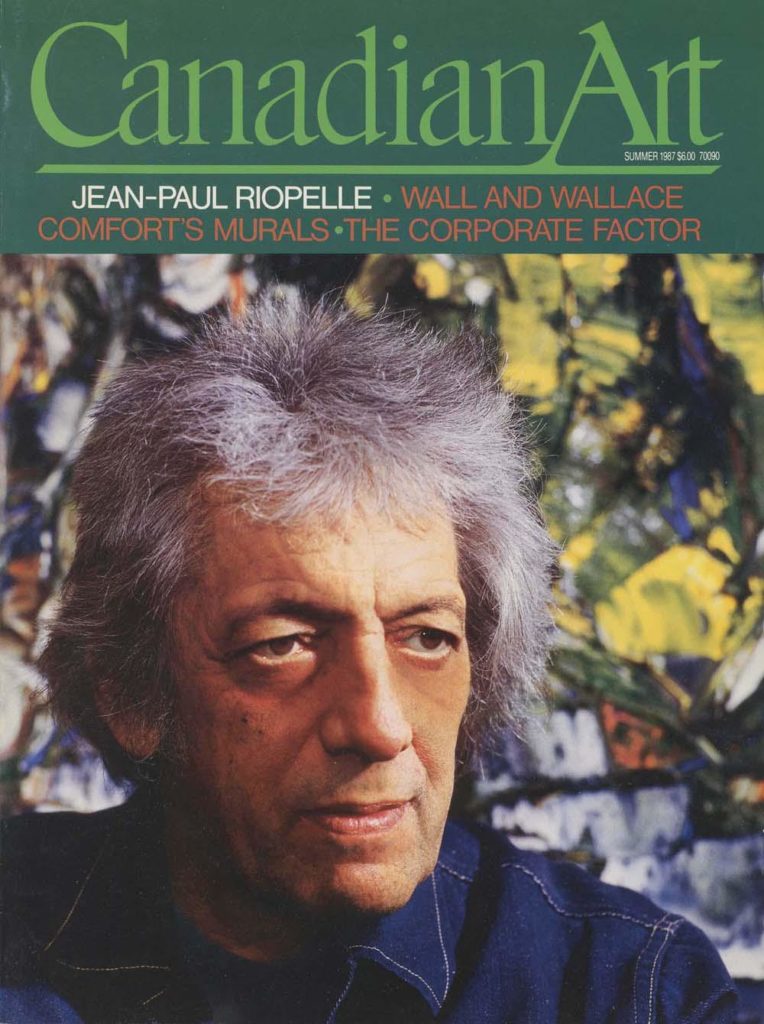Jean-Paul Riopelle is one of those exotic talents tempered by the discretion of a Sphinx. Nevertheless, what Robert Fulford said of him in Canadian Art in 1961 is still true. “More than any other Canadian, living or dead, he has impressed his artistic personality on the world outside of Canada.” A Montrealer who plunged fearlessly into the surrealistic depths of postwar Paris, he surfaced, by the mid-50s, in New York, as an artist whose painting was shown alongside the work of Giacometti, Dubuffet and Yves Tanguy. You could have seen him in a Montparnasse café with Jean-Paul Sartre or at the famous Cedar Tavern in New York with Jackson Pollock. He is a man with a passion for racing cars; he’s also a recluse who likes to go hunting for wild geese on Anticosti Island in the Gulf of St. Lawrence. But he is all of these things without even hinting at what he is really thinking. At once a myth and a reality, very much alive, very much a survivor of a bygone era of the hard-living, hard-drinking artist, Jean-Paul Riopelle is elusive, to say the least.
Two years ago in Paris, at the opening of Presence of Canadian Painting at the Canadian Cultural Centre, talk of Riopelle swirled from the ground floor, where young artists stared silently at one of his famous palette-knife oils from the ‘50s, to the champagne reception upstairs, where a gaggle of established Canadian artists discussed Riopelle’s latest paintings of geese and owls. Conversation rallied around either Riopelle or New York. Riopelle was not to be found, and, asked whether he would be arriving late from his studio in Saint-Cyr-en-Arthies, just west of Paris, Liliane Jenkins, then the centre’s art curator, was glad to divulge a tidbit about the mystery man: “Oh well, you know, Riopelle never comes to openings,” adding with a sigh, “he never has.”
So begins our Summer 1987 cover story. To keep reading, view a PDF of the entire article.









